Acids in skin care

Lactic Acid
Probably one of our favourite acids, it's in the AHA (alpha-hydroxy-acids) family and is mild enough that most skins can comfortably tolerate it.
It gently dislodges old dead skin cells giving an exfoliating effect and speeding up cell renewal. It does this while maintaining the skin's natural moisture factor so it won't leave you dry or dehydrated.
It is derived from milk, but you don't need to channel your inner Cleopatra and fill a bath tub as it is readily available in plenty of products such as: Multi-Functional Peel
Glycolic Acid
Glycolic Acid comes from sugar cane and is the smallest member of the AHA (alpha-hydroxy-acids)family, this means it can easily penetrate further into the epidermis making it a bit more intensive.
Glycolic works its way down into the hair follicle to help remove any built up sebum and dead skin cells that could otherwise lead to blackheads and breakouts.
Often found in cleansers and salon peels as it also helps shed the top layer of dead skin that can help improve the appearance of spots, scars and wrinkles.
It can be found here: Power Exfoliant Mask
Hyaluronic Acid
Known as hyaluronan, is found in a tone of creams and serums and is already pretty well known.
Much like collagen, Hyaluronic Acid is naturally found in your skin and just like collagen you stop producing as much as you age.
HA is a powerful humectant, it's job is to keep your cells nice and plump and hydrated. It does this with its ability to hold a thousand times its weight in water and retain it.
When applied topically it gives you a dewy youthful appearance, firming the skin and smoothing the appearance of fine lines so it's often found in anti aging products.
It plays well with most other ingredients, working along well with retinols and vitamins, pairing it with vitamin c can increase penetration.
It can be found here: 3D Hyaluronic Serum
Ascorbic Acid
Ascorbic acid or as it's more commonly known, Vitamin C.
In a lot of the products we work with you'll see it listed as L-Ascorbic Acid.
The chemically active part of the vitamin, made with just the left side of a molecule to help with penetration into the skin and to keep the product more stable.
The acid by itself is very unstable and in other products one the container is opened it will lose its potency.
It is a super powerful antioxidant, neutralising free radical damage. It is probably best known for it's lightening and brightening affect on the skin, often used in products for pigmentation or sun damage.
Fun fact, the word Ascorbus means no scurvy, from the times where Vitamin C rich foods were used to fight it off.
You can find L-Ascorbic Acid in these products: C + BHA Powder
Salicylic Acid
Salicylic is a BHA (beta-hydroxy-acids) is anti fungal and it is oil soluble, so they dissolve in oil and can penetrate deeper into oily pores, making it great for a breakout prone skin.
It was initially used for the treatment of warts as it was very effective at peeling off the unwanted blemish. Over time it was found to be useful in the beauty industry as it can soften discoloration and improve skin tone over time and can also be effective for treating rosacea.
It comes from the bark of the white willow tree and its related to aspirin, so it is advised that pregnant or breastfeeding women halt use of products containing it. Find it here: Corrective Cleanser & Peel
And finally did you hear the one about the angry fatty acid? He was lipid!



